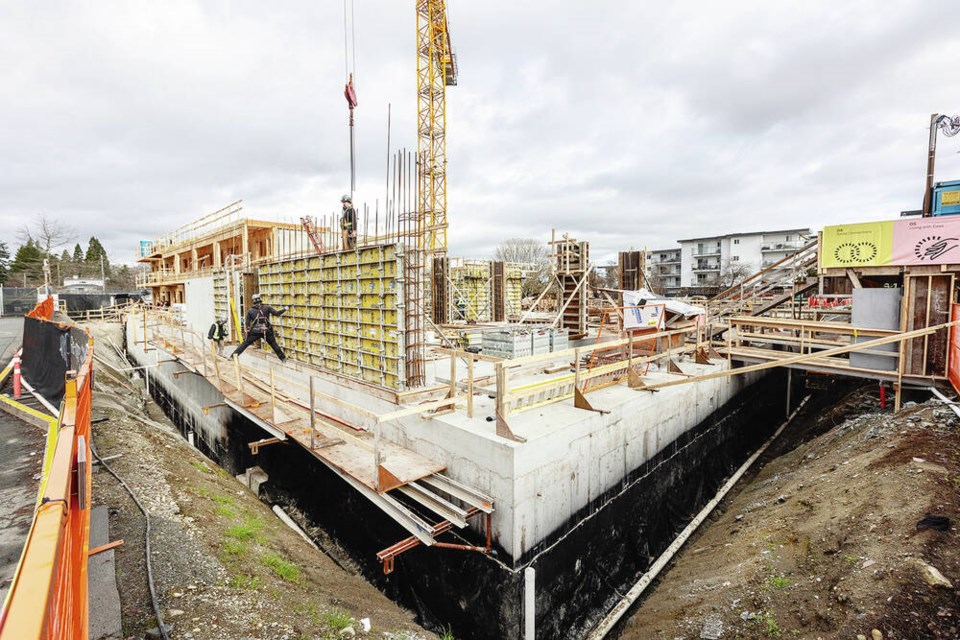Builders of rental projects are having to navigate through a “pretty dynamic” market when seeking financing amid high interest rates, says one of Victoria’s major developers.
“The economic climate is extremely challenging,” Chard Development chief executive Byron Chard said Thursday.
High interest rates play a major role when financial institutions evaluate projects, he said, affecting the amount of equity a developer has to build. Because major rental projects demand so much equity, some developers have found it is not economically viable to build, Chard said. He notes that just because a project wins approval at the local government level that doesn’t mean it will be able to line up the financing needed to start building.
There’s widespread anticipation that interest rates will start going down later this year.
Even if rates change, that is just one factor, Chard said. Another can be requirements sought by local governments for everything from transportation to parks, which can affect the ability of a developer to proceed and keep a project financially viable.
Chard is optimistic about the future. “I want to continue to invest in Victoria.”
The company will deliver on its planned mixed-use development at the corner of Douglas Street and Caledonia Avenue but has asked the city to allow it to reduce office space to build about 60 more rental units instead because of higher costs.
That project is set to deliver 133 below-market-price rental units, 235 market-price rental units, and 148 condominiums for a total of 516 units. Chard’s 1050 Yates St. project will add 483 rental units to the market.
As developers seek to get projects built, many renters are desperate for a place to live.
Greater Victoria has a tight vacancy rate of 1.6 per cent and is the third most expensive rental market in the country, behind Vancouver and Toronto, according to a new Canada Mortgage and Housing Corp. report.
Capital region renters are watching rental rates rise quickly. Population growth is helping to drive up demand.
A new multi-family housing year-end report from Colliers predicts that construction of purpose-built rental projects will continue to ramp up due to strong demand from renters and as interest rates are predicted to soften.
Developments under construction now will deliver 5,827 new rental units into the capital region, Colliers said. About 8,000 homes, including condominiums, single-family and town homes, are being built.
Of the rental units under construction, 11 are supportive housing, 23 are student housing, 262 are for senior living, 548 are dedicated for affordable housing and the remainder are market rentals, the report said.
“Greater Victoria’s market fundamentals remain robust,” it said.
“Rental rates continue to show strength, and the market grapples with meeting sustained tenant demand due to a perpetual lag in supply.”
A total of 21 multi-family properties priced at just over $2 million each are for sale in the capital region. That level of supply is partly due to some owners hoping for better market conditions if the interest rate drops, the report said.
Sales of purpose-built rental projects reached a total value of $427 million last year, down from $768 million in 2022.
Financing to buy land and for construction loans has been impacted by ongoing high interest rates, Colliers said.
Multi-family developers face high construction costs due to material and labour shortages as well as higher fees, taxes, building code regulations and other government charges, the report said.
The province has unveiled several new initiatives in recent months to spur development and to retain rental housing to combat the housing crisis.
Moves include widespread zoning changes favouring multi-plex construction and limiting the numbers of short-term rental units available.
Multi-family projects have dominated residential home building in the region. Last year, the number of housing starts hit a high of 4,992. The bulk of those were condominiums or rental units.
Casey Edge, executive director of Victoria Residential Builders Association, said the federal government could have spurred more rental growth when it last year announced it was waiving GST on materials used in rental construction.
Some builders who are building condominiums said that they would have switched those projects to rental if the waiver would apply to them as well, he said.
Edge wrote federal Finance Minister Chrystia Freeland urging her to include partly built projects in the waiver but the rules haven’t changed.
>>> To comment on this article, write a letter to the editor: [email protected]

